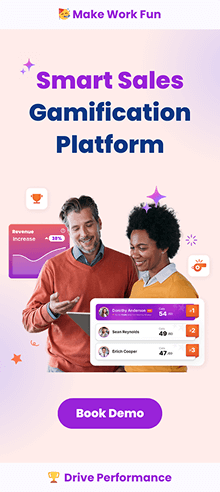In the fast-paced world of sales and customer relationship management, businesses continually seek innovative ways to motivate their teams and enhance productivity. One cutting-edge approach is Salesforce gamification, which taps into game mechanics to transform everyday Salesforce tasks into engaging challenges. By weaving gamified elements into Salesforce dashboards and reporting, organizations not only foster a culture of competition and achievement but also unlock deeper insights and faster adoption of best practices. This blog post explores the intersection of Salesforce’s robust features with gamification strategies, demonstrating how to elevate user experience and performance by highlighting gamification benefits.
What Is Salesforce Gamification?
Salesforce gamification involves incorporating game-design principles—such as points, badges, leaderboards, and rewards—into the Salesforce platform. This technique transforms routine sales activities into interactive experiences that encourage friendly competition and continuous learning through Salesforce CRM. By gamifying tasks like updating sales records, achieving quotas, or generating reports, businesses create an environment where every action has an immediate, tangible reward, boosting both morale and motivation.
Gamification leverages Salesforce’s inherent strengths: its customizable dashboards, comprehensive reporting tools, and data-driven insights. By aligning these features with gamified elements, organizations can turn data analysis and management into a fun, rewarding process. The result is a more engaged team that not only meets targets but also embraces the continuous improvement culture that gamification fosters.
Definition and Purpose of Gamification
Gamification is the strategic use of game design elements and mechanics in non-game contexts to drive engagement, motivation, and desired behaviors. In the context of Salesforce, gamification aims to enhance user adoption, employee engagement, and sales productivity by making the user experience more interactive, enjoyable, and rewarding. By incorporating elements like points, badges, and leaderboards, Salesforce users are encouraged to actively participate in the platform, leading to improved business outcomes and increased user satisfaction. The purpose of gamification is to transform routine tasks into engaging activities that not only boost morale but also drive performance and efficiency.
Integrating Gamification with Salesforce Features
Leveraging Dashboards for Gamified Experiences
Salesforce dashboards are central to visualizing performance metrics and trends for sales teams. By infusing them with gamification, you create a dynamic and interactive user interface that motivates and informs.
- Real-Time Leaderboards: Instead of static graphs, transform dashboards into real-time leaderboards where individuals and teams can instantly see their rankings. This feature encourages healthy competition as users strive to climb higher on the leaderboard, pushing boundaries and driving results.
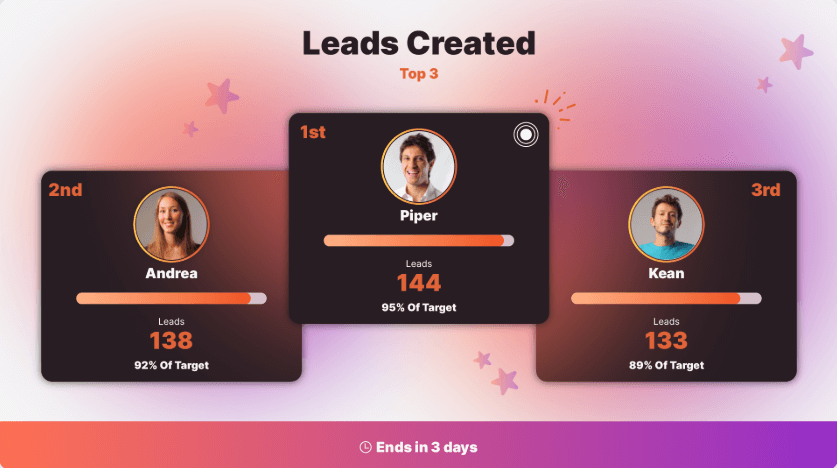
- Progress Bars and Goals: Establish clear performance milestones and visualize the journey toward them using progress bars. These interactive elements provide immediate feedback, allowing team members to track their progress in real time and set incremental goals to maintain momentum.
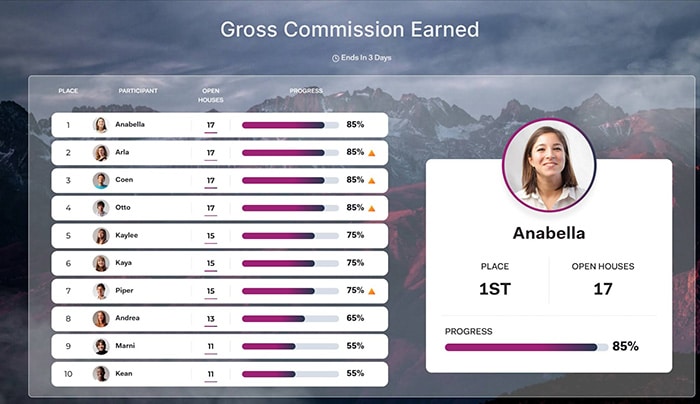
- Achievement Badges: Integrate digital badges or trophies within dashboards to celebrate milestones. When a salesperson closes a major deal or achieves a monthly target, a badge appears, creating a sense of accomplishment that motivates further performance.

- Customizable Dashboard Elements: Allow users to customize their dashboards with widgets and gamified icons that represent their journey and personal achievements. This personalization creates a more engaging environment that caters to individual aspirations while aligning with team goals.
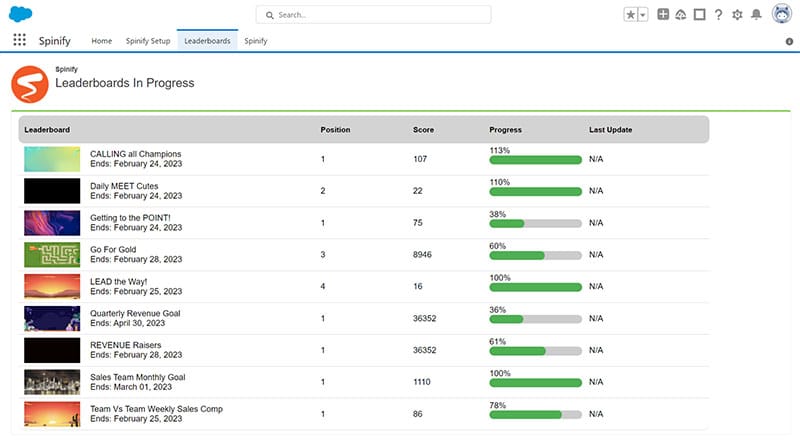
By transforming traditional dashboards into dynamic, gamified hubs, organizations encourage continuous engagement and provide a visual representation of progress that resonates on a personal level.
Enhancing Reporting Through Gamification
Reports in Salesforce are traditionally static documents that provide important business insights. Incorporating gamification into reporting transforms these tools into interactive experiences, offering more than just data to motivate sales reps.
- Competition-Based Metrics: Design reports that enable teams or individuals to compete on specific metrics such as lead conversion rates, customer satisfaction scores, or deal sizes. For instance, a weekly report could highlight the top performers in closing deals, encouraging others to innovate and improve.
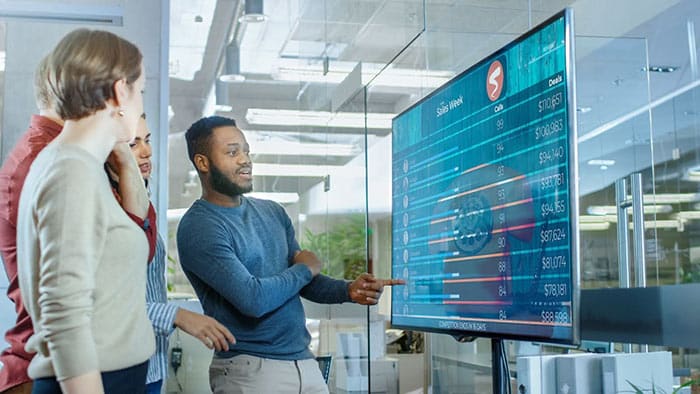
- Data-Driven Rewards: Link improvements in key metrics directly to rewards systems. If a team improves its monthly sales growth by a certain percentage, they could earn additional incentives. This approach ensures that reports don’t just inform but also drive action.
- Interactive Feedback Loops: Utilize interactive reports where users can drill down into details, compare performance over different time periods, and identify trends. This interactive nature serves as a feedback loop, letting users adjust strategies based on real-time insights, making data analysis feel like a quest with clear next steps.
- Storytelling Through Data: Introduce narrative elements to reports, where each data point tells a story of success, challenges, and opportunities. By contextualizing numbers with engaging narratives and visuals, users stay more invested in exploring the data and taking actionable steps.
Gamifying reports turns them from static reviews into dynamic conversations, where data becomes a catalyst for friendly competition and continuous improvement.
Benefits of Gamifying Salesforce Dashboards and Reports
Integrating gamification within Salesforce features offers numerous strategic advantages:
- Increased Engagement: Gamified dashboards and reports make data exploration exciting, capturing user interest and encouraging users to interact more frequently with the system. Engaging visual elements, challenges, and rewards capture attention and drive continuous use.
- Boosted Adoption: When Salesforce usage feels rewarding and fun, team members are more inclined to adopt the platform fully. Gamification reduces resistance to change by turning learning and using new features into a game-like experience that feels less like work and more like play.
- Enhanced Productivity: Friendly competition and clear incentives motivate teams to exceed their targets. As teams strive to outperform their peers, productivity naturally increases, driving better results without feeling forced.
- Actionable Insights: Gamified elements guide users to focus on key performance indicators and strategic goals, transforming raw data into meaningful actions. Progress bars, badges, and leaderboards help users prioritize tasks and focus on high-impact activities.
- Improved Collaboration: Gamification can foster collaboration by introducing team-based challenges or shared goals. When success is tied to team achievements, members are more likely to help each other, share best practices, and learn collectively.
By bringing gamification into Salesforce, businesses create an environment where routine tasks become opportunities for growth, learning, and fun—leading to improved morale, higher efficiency, and a stronger bottom line.
Salesforce Gamification Essentials
Salesforce gamification is a powerful tool for driving user adoption and improving sales performance. By incorporating game mechanics and techniques, such as points, badges, and leaderboards, organizations can create a more engaging and interactive user experience. Salesforce gamification essentials include:
- Clear Objectives and Metrics: Establishing clear goals and measurable metrics to track progress and success is crucial. This ensures that users understand what they are working towards and can see their achievements.
- Engaging Challenges and Activities: Designing challenges and activities that encourage desired behaviors keeps users motivated and engaged. These should be aligned with business goals and provide a sense of accomplishment.
- Meaningful Rewards and Recognition: Offering rewards and recognition for achieving milestones or completing tasks incentivizes users to stay engaged and perform at their best. This could include digital badges, points, or tangible rewards.
- Continuous Monitoring and Iteration: Regularly monitoring user engagement and performance allows for continuous improvement. By iterating on gamification strategies, organizations can optimize engagement and drive desired business outcomes.
Gamification Techniques for Salesforce
Gamification techniques for Salesforce include a variety of methods to keep users engaged and motivated:
- Points and Badges: Assigning points for completing tasks and awarding badges for achievements helps track progress and recognize accomplishments.
- Leaderboards: Displaying leaderboards fosters healthy competition and provides recognition for top performers, motivating others to improve.
- Challenges and Quests: Creating challenges and quests encourages users to engage in desired behaviors and achieve specific goals.
- Progress Bars: Visualizing progress with bars helps users see how close they are to reaching their targets, providing motivation to continue.
- Rewards and Recognition: Offering rewards, whether digital or tangible, incentivizes users to stay engaged and perform well.
- Storytelling and Avatars: Using storytelling and avatars creates a more immersive and interactive user experience, making tasks feel more like a game.
- Social Interaction and Collaboration: Encouraging social interaction and collaboration fosters teamwork and knowledge sharing, enhancing overall engagement.
Gamification Tools for Salesforce
Several gamification tools can be integrated with Salesforce to enhance user engagement and productivity:
- Spinify: A gamification platform that seamlessly integrates with Salesforce, Spinify drives employee engagement and sales productivity through customizable leaderboards, automated badge awards, and incentive programs.
- EPAM Heroes: This Salesforce gamification solution provides a toolbox of techniques to make any activity more engaging, from points and badges to leaderboards and challenges.
- Whatfix: A digital adoption platform that offers contextual in-app guidance and multi-format self-help content, Whatfix helps drive Salesforce adoption by making the user experience more intuitive and engaging.
- Trailhead: Salesforce’s own gamified learning platform, Trailhead allows users to earn points and badges as they progress through learning modules, fostering competition and continuous learning among Trailblazers.
Getting Started with Salesforce Gamification
If you’re new to the world of gamification, the first step is to educate yourself on how to implement gamification and best practices. Our Gamification for Salesforce guide provides a comprehensive introduction, covering everything from basic concepts to advanced strategies.
This guide will walk you through:
- Understanding the core principles of gamification.
- Identifying key areas within Salesforce where gamification can have the most significant impact.
- Step-by-step instructions for setting up a gamification strategy in Salesforce.
By starting with a solid foundation, you can plan a gamification strategy that aligns with your business goals and resonates with your team.
The Ultimate Guide to Gamify Salesforce and Salesforce Adoption
For a deeper dive, explore The Ultimate Guide to Gamify Salesforce and Adoption. This page offers a holistic view of:
- Strategies to gamify various Salesforce components beyond dashboards and reports.
- Best practices for driving user adoption through engaging, gamified experiences.
- Detailed case studies and success stories from organizations that have transformed their Salesforce usage.
- Tips for integrating advanced features like AI, predictive analytics, and mobile access with gamification to further enhance the user experience.
The guide serves as an exhaustive resource to craft a comprehensive gamification strategy, ensuring every facet of Salesforce is leveraged for maximum engagement and productivity.
Enhance Your Salesforce Experience with Spinify Gamification Tools
Ready to take your Salesforce gamification journey to the next level? Spinify offers a powerful, turnkey solution designed specifically to integrate gamification into your Salesforce environment.
Spinify seamlessly connects with your Salesforce dashboards and reporting tools, adding layers of gamified elements such as:
- Customizable leaderboards that update in real-time.
- Automated badge awards and milestone celebrations.
- Incentive programs that tie rewards to key performance metrics.
Designing Engaging Dashboards and Reports
Designing engaging dashboards and reports is crucial for driving user adoption and improving sales performance. Effective dashboard design principles include:
- Clear and Concise Visualizations: Use charts, graphs, and other visualizations to communicate key metrics and insights clearly and concisely.
- Intuitive Navigation and Filtering: Ensure that users can easily navigate and filter the dashboard to find the information they need quickly.
- Real-Time Data and Updates: Provide real-time data and updates to ensure users have access to the most current information, enabling timely decision-making.
- Personalization and Customization: Allow users to personalize and customize their dashboards to meet their specific needs and preferences, enhancing their overall experience and engagement.
Principles of Effective Dashboard Design
Principles of effective dashboard design include:
- Keep It Simple and Intuitive: Avoid clutter and ensure that the dashboard is easy to navigate, allowing users to find the information they need without confusion.
- Use Clear and Concise Visualizations: Employ charts, graphs, and other visual tools to communicate key metrics and insights effectively.
- Make It Interactive: Enable users to filter, sort, and drill down into data to gain deeper insights and make informed decisions.
- Use Real-Time Data: Ensure that the dashboard is updated in real-time, providing users with the most up-to-date information for accurate analysis.
- Personalize and Customize: Allow users to tailor the dashboard to their specific needs and preferences, creating a more engaging and relevant user experience.
By following these principles, organizations can design dashboards and reports that not only drive user adoption but also enhance overall sales performance and productivity.
By utilizing Spinify, you can effortlessly embed motivation and excitement into everyday tasks, driving higher adoption and performance. Spinify not only makes the Salesforce experience more enjoyable but also helps in extracting actionable insights that lead to tangible business results.
Discover how Spinify can revolutionize your Salesforce strategy. Visit our Gamification for Salesforce page to learn more about how Spinify enhances dashboards, reporting, and overall user engagement.
Driving Success: The Transformative Power of Salesforce Gamification on Sales Productivity
Salesforce gamification is more than a trend—it’s a strategic approach that turns data into a driving force for engagement and productivity. By integrating gamification into Salesforce dashboards and reporting, you empower your teams to strive for excellence, celebrate milestones, and continuously improve. Embrace the power of gamification to transform your Salesforce experience, and explore resources like Spinify to guide you on this rewarding journey. Start today and see how a gamified Salesforce environment can propel your team’s success to new heights.

